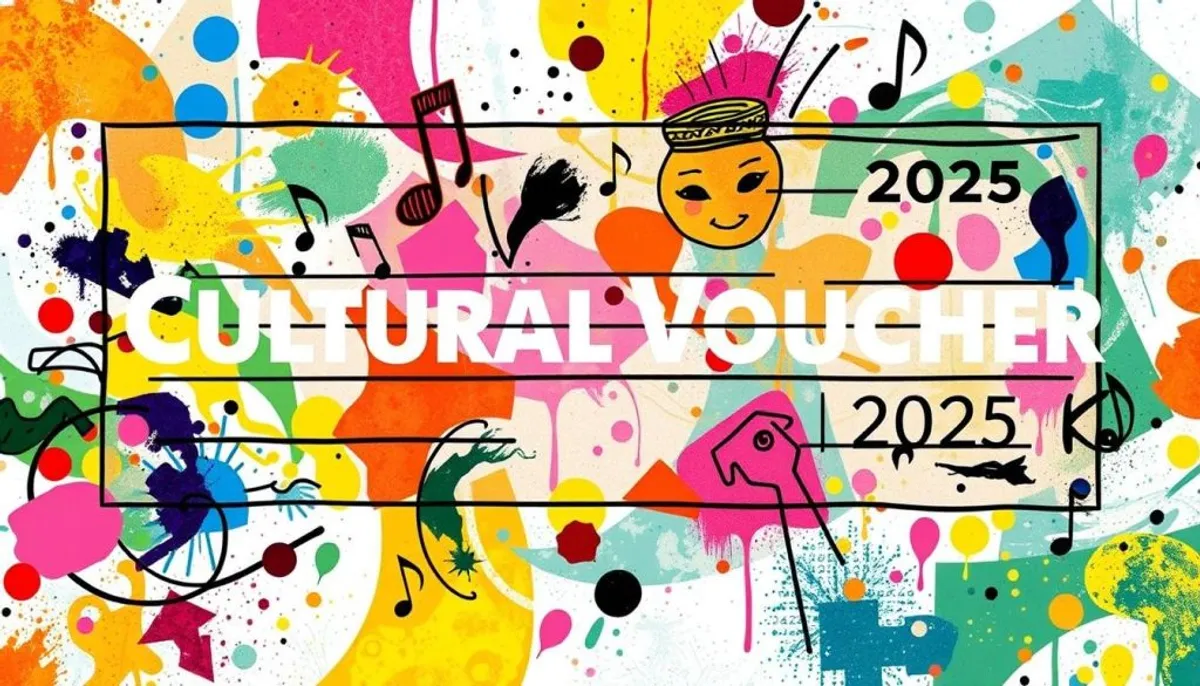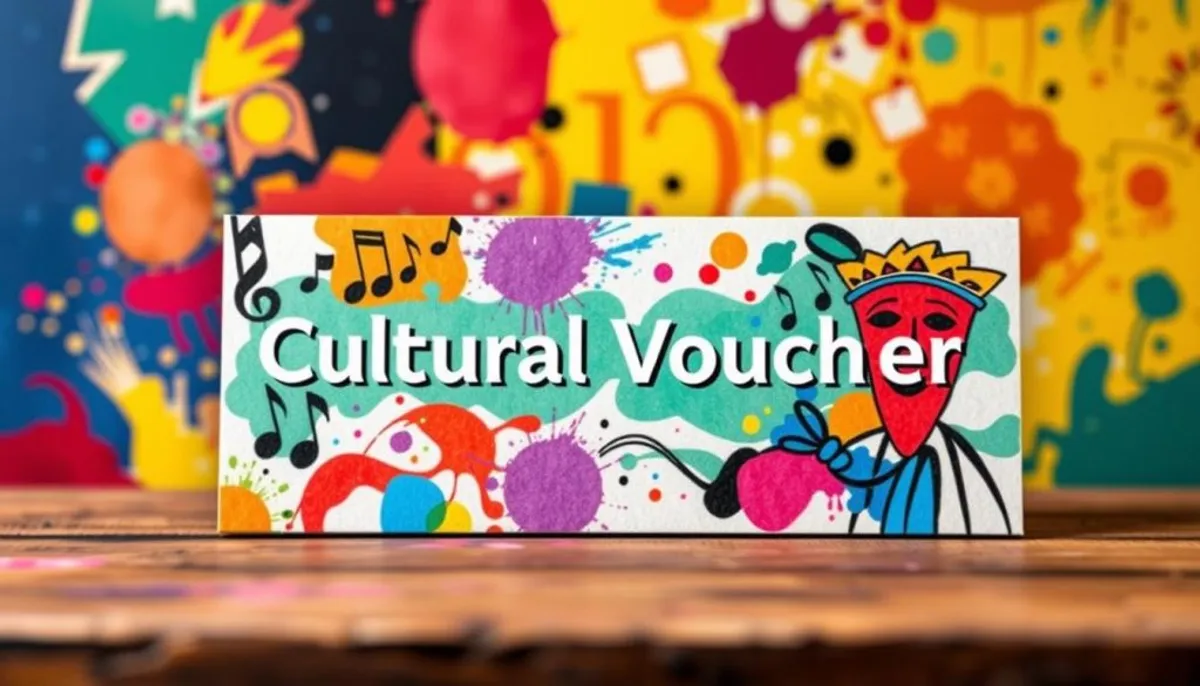The cultural voucher, an innovative cultural device, facilitates access to culture for everyone in France. This guide enlightens you on its advantages and how it works in 2025.
Launched in the 1980s, this device has transformed into a valuable tool for employees and students. In 2025, it offers €40 to 6th graders in certain departments, such as the Ardennes.

This voucher allows the purchase of books, going to the cinema or theater, and joining cultural associations. Distributed at the beginning of the school year, it is valid until August 31 of the following year.
Cultural vouchers help improve the purchasing power of employees. They cover various cultural expenses: music, cinema, theater, videos, concerts, reading, and museums.
A major advantage: these vouchers are exempt from social contributions, CSG, CRDS, and income tax. For employers, there is no limit to the exemption they can benefit from.
Overview of the cultural voucher system 2025
The cultural voucher 2025 is a major initiative in the democratization of culture in France. It aims to provide broader access to cultural activities for all citizens, particularly through the use of cultural vouchers. This innovative device represents a giant step toward a more culturally rich society.
Definition and objectives of the cultural voucher
The cultural voucher is a payment instrument specific to cultural goods and services. Its main objective is to make culture accessible to a greater number of people. Beneficiaries can thus enjoy a range of cultural activities, from cinema to museums, including the purchase of books.
History and evolution of the system
Since the 1980s, the cultural voucher has played a crucial role in the democratization of culture in France. Today, 18 of the 22 French regions have adopted similar versions to encourage access to culture. The system has evolved to meet current demands, now offering both a paper version and a digital version.
Amount and composition of the cultural voucher booklet
In 2025, the amount of the cultural voucher booklet varies by region. For example, in the Ardennes, 6th graders receive a voucher booklet of €40, consisting of 4 vouchers of €5 and 2 vouchers of €10. In Belfort, young people aged 18 to 25 benefit from assistance of €30 in the form of six coupons of €5.

The vouchers can be used in a multitude of cultural establishments, from bookstores to museums. They embody a cultural policy aimed at making culture accessible to all, everywhere in France. In doing so, they greatly contribute to the democratization of culture in our society.
How to obtain a cultural voucher
Obtaining a cultural voucher is an accessible process for those who are entitled to it. This system aims to make culture accessible to everyone, regardless of professional status.
Eligibility criteria for beneficiaries
The eligibility criteria for the cultural voucher are broad. They cover employees on permanent contracts, fixed-term contracts, part-time, as well as temporary workers, apprentices, and interns. This wide eligibility aims to promote equal access to culture within companies.
Distribution procedure in establishments
The distribution of cultural vouchers is generally managed by the Social and Economic Committee (CSE) throughout the year. Unlike traditional gift vouchers, these vouchers are not tied to specific occasions. They therefore offer greater flexibility to beneficiaries.

Deadlines and validity of the vouchers
The validity period of cultural vouchers varies by issuer. It is crucial to check the expiration date on each voucher. Generally, they are valid for the current year, allowing beneficiaries to plan their cultural activities.
| Characteristic | Detail |
|---|---|
| Minimum amount | €15 |
| Exemption from social charges | Total |
| Partners | 4,500 outings, 4,000 bookstores, 500 ticketing spaces |
| Accessible shows | About 50,000 |
| Establishments accepting vouchers | FNAC, Carrefour, Cultura, etc. |
Use and areas of application of cultural vouchers
The use of cultural vouchers opens up a wide range of cultural opportunities. They allow access to a variety of activities, thus enriching the cultural experience of young people.
Cultural and artistic activities covered
Cultural vouchers cover a wide range of activities:
- Purchase of books and records
- Tickets for cinema, theater, and concerts
- Entry to exhibitions and museums
- DVDs, video games, and educational software
- Music, dance, and theater classes
Participating establishments and partners
Many cultural partners accept cultural vouchers:
| Type of establishment | Examples |
|---|---|
| Bookstores | Fnac, Cultura, independent bookstores |
| Cinemas | UGC, Pathé, local cinemas |
| Museums | Louvre, Centre Pompidou, regional museums |
| Theaters | Comédie-Française, municipal theaters |
| Art schools | Conservatories, dance schools, art workshops |
Restrictions and conditions of use
The use of cultural vouchers is subject to certain rules:
- Prohibition of non-cultural purchases
- Limited validity period (often one school year)
- Ceiling amounts for certain categories
- Specific conditions depending on the establishments
These restrictions aim to ensure that cultural vouchers are used in accordance with their purpose: to promote access to culture for all young people.
Tax advantages and exemptions
Cultural vouchers offer numerous tax advantages and social exemptions, making them very attractive to companies. These systems allow employers to support their employees' access to culture. They thus benefit from interesting tax advantages.
The cultural voucher is distinguished by its total exemption from social contributions and charges. It differs from traditional gift vouchers by its absence of an annual amount ceiling. This flexibility allows companies to allocate cultural vouchers throughout the year, without restrictions related to specific events.
For employees, the cultural vouchers received are generally not considered taxable income. This represents a significant advantage. Employees can fully enjoy this system without impacting their personal tax situation.
The benefits for companies are multiple. In addition to social exemptions, the allocation of cultural vouchers can be part of an attractive social and cultural responsibility policy. However, it is important to adhere to certain rules to fully enjoy these advantages:
- In companies with more than 50 employees, cultural vouchers must be allocated to all employees, with the same amount for each.
- The use of vouchers is limited to the purchase of goods or services of a cultural nature from approved partners.
- Sports events are not eligible for the cultural voucher system.
By adhering to these conditions, companies can fully benefit from the tax advantages of the cultural voucher. They thus contribute to the cultural enrichment of their employees.
Conclusion
The assessment of the cultural voucher in 2025 highlights its importance and growing popularity. Introduced in the 1990s, it has gained favor among companies to reward their employees. Its cultural role is essential, allowing everyone to access culture through financial support.
The coming years promise to continue to enhance the cultural voucher. Without social charges, it offers unprecedented freedom to employers. It applies to a variety of cultural experiences, from theater to cinema, including museums and the purchase of books. This diversity strengthens its appeal and impact on the cultural sector.
In summary, the cultural voucher remains a key tool for democratizing access to culture. Its positive assessment and prospects for 2025 underscore its vital role in the French cultural landscape. It enriches the lives of employees while supporting the cultural sector, confirming its essential place in corporate and cultural policies.
RelatedRelated articles


